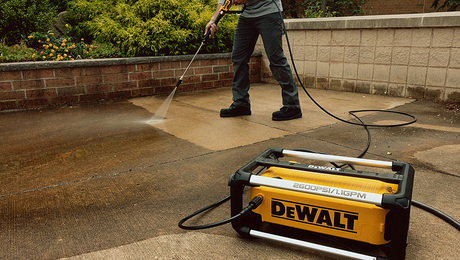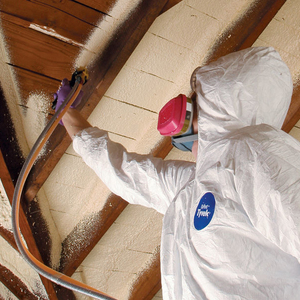Insulation and vapor barrier in a crawl space
Bear with me, as I know this topic has been discussed more than a hundred times. But I’m still confused. The more I read, the more confused I get. Just as one seemingly authoritative source confidently says “Do this…” the next source belittles that idea and says it’s a sure-fire way to rot your house to pieces. So anyway…
I have a small sun-room at the back of my house. It’s 13 x 7. It sits on top of a couple of concrete posts, and was built probably 20 years after the house. It was obviously a quickie add-on (not done by me). The area under the sun room is closed off on two sides by the house’s existing concrete foundation, and on the two other sides by cheap particle board that is coming loose. There is no ventilation, other than the loose particle boards. I tore down some of those boards to have a peek in there, and found the following:
* No plastic sheet on the ground on the dirt floor of the crawl space.
* The ceiling of the crawl space is closed off with cheap plywood. I can’t see the sun-room’s floor joists or tell whether there’s insulation in there.
My question: What do I do in there to upgrade the situation? I’ve read plenty about putting a vapor barrier on the ground, and everybody disagrees about how to do it. The encapsulator crowd mock everything but full-blown encapsulation.
In addition, I’m a little worried about the floor joists being inaccessible. Should I tear down the plywood that covers them, add insulation (if there is none), and should I leave the insulation uncovered? Or cover it with home wrap? Or with the old plywood? Or with wire? Or something else?
Whatever I do, when I’m done, should I completely seal off that crawl space and vent it somehow?
As I say, no one seems to agree about this stuff. Are there any authoritative resources out there? I’m near Montreal, and it seems fairly dry in the crawl space.
Thanks for any help.



















Replies
ah, Crawlspace-vent/no vent?
In your case I would ask, is it heated and if so, how?
If no direct heat, do you leave doors open for passive heating except in real cold weather?
Does the room get passive solar heat?
or, do you just close it off for the winter?
Thanks for the quick response.
The crawl space is not heated at all. The entire space is closed off (on two sides by the foundations of the house, and on the other two sides by cheap, loose particle board. The crawl space is about 30 inches high.
The sunroom above the crawl space remains open all year, and so gets heat from the house, but it can get darn cold in there. The sun-room has a base board heater, but we figure it's the equivalent of heating the great outdoors, so we rarely turn it on. The fact is, it's hardly a real sun-room, in that it has been built into the north-eastern corner of the house. The sun-room and the crawl space beneath it get between two and four hours a day of sunlight maximum (depending on the season). Why do we leave it open all winter? We have a variety of (pretty hardy) plants in there. Closing the door would make it too cold for them. On top of that, it can be pleasant in there on a sunny winter morning if it's around 0 Celsius or higher outside. But as soon as the sun's gone, look out.
Thanks.
Whelp
Here's what I might do it if was mine.
I'd get under there and remove the plywood that covers your joists. I'd insulate the joist cavities with whatever you feel will work best for you-whether it be sprayed foam, cut up and foamed in foamboard or fibreglass. I don't think I'd worry about whether or not the fibreglas was faced or not-warm moist air shouldn't be driven down and through your floor (but here I'm no scientist and could be very wrong).
I'd then prepaint plywood and re-install that to the bottom of the floor joists. I don't know that treated ply is going to be necessary-you're up above grade a good amount and you'll probably be putting down 6mil or thicker visqueen over that dirt crawl.
I'd cover the two sides that are open I guess, to keep the wind out from under it-maybe.
If you don't have cats that like to poop under that thing-perhaps leave it open.
At any rate I'd leave a place available for access so you could get under there.
You mention part. bd-I'm guessing you mean OSB or waferboard. Either love to suck up moisture and fall apart. If closing it in you need to find something that would take ground contact, be rigid enough so you don't have to do much to secure it in place at the uneven ground level, and reasonably priced. Azek or other pvc sheeting would cover the first, but sort of lack in the second and probably scare you in the third. Maybe there's some pleasing mobile home skirting that would fill the bill.
I see why you get a bunch of different ideas-it's because there is in this situation.
Here in Ohio I'm a believer of a sealed crawl, especially if it's mildly or accidentally a conditioned space. Warm moist summer air coming in contact with cool masonry, metal or even wood tends to condense-if not droplets, enough moisture collected to make it damp. That's even if the ground is covered with visqueen. The moisture is in the humid air that venting introduces to the space.
So I like to cover the ground and seal the space. No moisture coming up from the ground and no moisture laden air to goof up the balance.
Of course, that assumes proper drainage around and a dry crawl to begin with.
Confused even more?
then my work here is done.
We think alike
We think pretty much alike, as those are my instincts as well. However, I have seen plenty of sites where they would likely disagree with putting the plywood back up to cover the joists. Many people seem to feel that moisture is going to get at those joists and the insulation one way or another, and giving it no way out is a bad idea. Cover it with breathable home wrap, they say. Or leave it open and just hold it in with special nails, or piano wire, or chicken wire. Everyone has a different method/rationale.
Even the plastic on the dirt: stake it/don't stake it; bring it six inches up the wall/12 inches/all the way/don't use it at all; cover it with sand/don't be an idiot!
Everyone has a different notion of air movement, moisture levels, and where mositure will go if you do a, b, c or d.
I'm pretty much going to follow your advice: rip down the cheap wafer board, unscrew the cheap ply covering the joists, make sure there's some decent insulation between the joists, ensure there's no rot and then cover those joists up with the ply again. Then get rid of the wafer board and replace with something rot resistant. There will defintely be animals under there if I don't close it off.
Thanks for responding.
Hey Vince.
Did you go to the Building Science site and look around for an opinion on the situation? I'd give them a try and a serious study.
They actually may have tested their theories, unlike a lot of us that just "do it that way"................
Here's the link
to building science.
http://www.buildingscience.com/index_html
My concerns w/leaving the insulation open is that vermin like to root around that stuff and use it or make it their home. Not sure what kinds of vermin you got up there in that town.
Thanks for the link
I hadn't been there yet. I've started reading about changes to code, etc., with regard to crawl spaces, and I've read at least one scientific paper that says all the old notions about enormous amounts of water being pulled up through a crawl space into the home generally defy the laws of physics, but man, the opinions fly like confetti. Scientific papers tend to lose track of the main point pretty quickly and drift into theorizing. I just wanna know whether I should cover the insulation, and with what? And with regard to vapor barriers, opinions are changing rapidly. Some sites say you should stake them into the ground, so that any water that accumulates on them can eventually flow into the ground through the stake holes. If you have an immaculately unpunctured vapor barrier on the ground and water somehow gets on it, it's got nowhere to go but up. Of course, it depends on how wet it is in the space, the temperature, your ability to create a good, permanent seal, etc. It's an endless series of 'ifs' and caveats.
Anyway, as I wrote yesterday, it's pretty dry in my crawl space. I just want to make sure that it's insulated between the floor joists. If there's no rot or mold or anything else when I take down the ply that covers the joists, I'm not going to mess around with success. The ply will go back up once I have decent insulation in there. As for vapor barriers, I don't know. Once again, if there isn't any apparent problem, I'm reluctant to mess with what's already there (nothing in the case of a vapor barrier) . But I'll probably put one down anyway.
I'll continue searching the Building Science site.
Thanks again.
(P.S. -- Without something covering up the insulation between the joists, there will definitely be critters up there. That pretty much decides that question, I guess. ;-)
There's a million opinions
on just about everything as you've seen.
There's code regulations and changes to that code made after applications were found wrong or area specific.
Somewhere in the middle is the answer.
Best of luck.
So, what did you do?
I've read your posts and the replies with great interest, and I've even been to the BSC site and read until my brain got a little numb. I have a client who wants to replace the skirting around her sunroom, as the wood used was in contact with the ground and has finally begun to rot. In several ways her situation is similar to yours: the room (12' x 20') is attached to the house on one 20' side; the opposite 20' side is supported by three piers. The street side was skirted with a nice-looking wood (that is now rotting), the 20' side just has plywood, and the backyard side has no skirting but is shielded from view (but not wind) by an attached deck. The space is about 20" - 24" high. The main complaint I am dealing with besides unsightly wood is a cold sunroom. The client has recently reinsulated between the floor joists with blown-in cellulose held in place by a fabric that resembles a housewrap, though not one I'm familiar with if it is.
Last year when I first looked at the project (which had to be rescheduled to this fall) and the cellulose was not there, but some clearly ineffective old fiberglass, I had proposed sealing the three sides with PT plywood attached to a short PT stud wall. The plywood would have been covered with blueboard and one of the stucco-like products that brush on and stick to extruded polystyrene. The whole assembly would have extended a few inches below grade and been firmly attached and braced to the underside of the floor framing, and, yes was to have included vents. And I planned on uprgrading whatever vapor barrier was lyong on the dirt, probably with a single, appropriately sized, woven plastic tarp . Now it's time to do the job, but nagging doubts about the building science issues led me to the forum here. The BSC website was all about "treating the crawl space like a short basement: insulate the perimeter, not the floors." Or , if you insulate the floor, leave an airspace in the insulation under the subfloor, and the apply poyiso witht the foil facing down. Or spraying the joists with foam of a certain density... But most of these scenarios assumed a closed in crawl space, and options regarding the floor insulation. I don't want to go ripping out the just installed cellulose without real good authority.
So, I've read a little bit, and you hear me talking about what I "had planned". Now I'm thinking I should just replace the skirting with lattice and let the new cellulose do the warming job--perhaps go ahead and plunk down the $25 tarp for good measure. Alternatively, attaching foil-face rigid insulation to the floor joists, then doing the lattice, might make sense.
I am hoping your experience may help. Your posts were about six months ago. Did you reach enlightenment? Did you do the work, and if so, how?
Don't forget that location/climate can affect the recommended approach. By in large, Calvin's advice is most likely good.
Hi,
I'm down here in Houston and an unvented crawlspace would generate a ton of mold. You don't say how old the sunroom was. So you might just test the joists for soundness. If they don't bounce badly and don't smell musty, then I would suggest it is best left alone.
If you are still concerned, or if you are going to make this an additional room for your house, then I would yank off the ply, insulate it with fiberglass, I put the wrong side down, and since this is a small area, a roll of hardware screen will cover it and keep out the more obnoxious vermin.
good luck
john
Check this out:
http://www.buildingscience.com/documents/reports/rr-0401-conditioned-crawl-space-construction-performance-and-codes
http://www.buildingscience.com/documents/reports/rr-0509d-crawlspaces/view?topic=/doctypes/researchreport
These will answer your questions and perhaps raise a few more.
Billy
I'll contribute
a few comments. Yeah, not much of a 'sun' room. I would connect the sunroom w/ the ground. By that, I'm saying skirt/enclose it with possible operable vents to open in the summer. A vapor retarder on the ground will help control moisture.
Not sure why there is plywood on the bottom of the joists, someone mentioned e.g. vermin, etc. Find out if it is insulated. If not, I'd remove it and maybe insulate. Cover w/ e.g. tyvek to minimize air leakage. If the crawl is enclosed, it seems to me that you shouldn't have issues w/ e.g. vermin.
A weather/ground durable skirt is important as some have pointed out. One option would be to insulate that skirt. The insulation is easier than the skirting (IMO) ... you can use extruded polystyrene.
Energy wise, it is better to connect to the ground ... as the ground will be e.g. 50-55 degF instead of the outdoor winter temp (well under that). That's why an insulated perimeter would be considered by some to be THE way to go ... then eliminate floor insulation ... it also may be less square footage.
Again summer venting would be a good option, but you'll probably have those that say if you have a good ground cover, you wouldn't need it ... question always is ... how 'good' does the ground cover need to be ... the key would be in details of sealing that ground cover around the perimeter ... your space is small enough that you shouldn't have issues of seams, but you do have the perimeter to consider.
Always have an access panel to get under there. ... either in the floor or through the skirting.
Work on the upper later for energy improvements. Opening doors to the space does impact your energy use, so it's important. Think about the glazing and the ceiling insulation. 13x7 isn't too big. Maybe consider eliminating some glass (on the short side?). You should still have plenty of lights for the plants.
I had a passive solar sunspace that was also unheated ... I'd NEVER open to the house on cloudy/cold days. My plants went crazy in there ... but I had high performance glass ... never got below like 50 deg in there even when it was below zero outside.
Good luck ... sift through the comments for the best ideas for your particular situation.